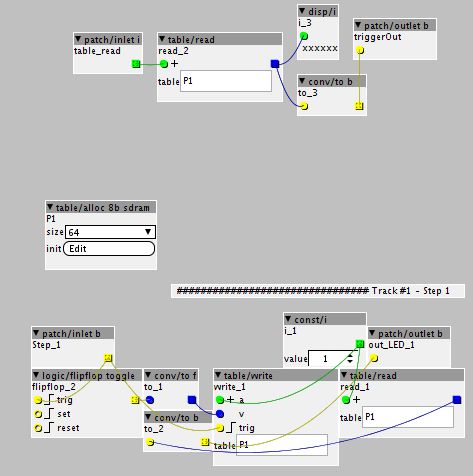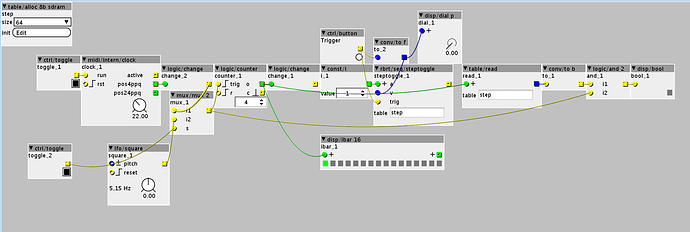Hi,
when a sample is triggered on a table/play-object twice or more times in a row, only the first trigger is played.. when I want to have a re-trigger, I have to use the stop-inlet on it, am I right???
If so.. then how does this work?.. i mean.. i have my MIDI/Clock controlled sequence that triggers the play-object.. how do I make it timetravel to the future an tell it, hey stop your playback.. so the new trigger on the next step would be played (?)






